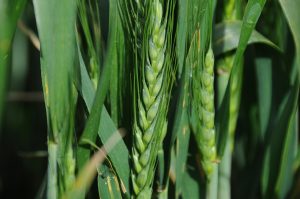Traditionally, the problem with having a good season was that the economic reality of the supply and demand equation almost inevitably saw strong grain supplies met with lower prices. In the last 20 years, the international market has helped put a floor under prices, but if we are looking at bumper crops globally, and locally, what tools are there to manage prices?
The last month has seen a series of increases in the expectations for yields in both world crops, and those in Australia. Not surprisingly, improving supply expectations have led to deteriorating price expectations.
Chicago Soft Red Wheat (SRW) for December-20 has fallen from the highs of 550¢/bu in early July, to lows of 500¢ mid-last week. Surprisingly, given the latest update on the WASDE, SRW isn’t back at the lows seen late June, but it has been assisted by a weaker US dollar.
Locally wheat prices have reverted to an export parity market, as they have to when there is a big crop. ASX Jan-21 wheat closed Friday at $272/t, a contract low, and the weakest price since the 2017-18 harvest.
Regular readers will know that we often try and base physical buying and selling decisions on the ‘basis’ or spread between local prices and international values. In a lower price environment, using basis as a buying or selling guide allows us to separate out international prices and manage them separately, if we want to.
Figure 1 shows the ASX Jan 21 Wheat Futures spread to CBOT SRW Dec-20 since the middle of last year. The ASX Wheat basis has shown some volatility in recent weeks, but some resistance to lower price levels has actually seen basis improve since March and April. With basis currently sitting between $10 and $20/t it is much lower than recent harvests.
Figure 2 shows that old crop APW basis for Geelong still sits at around $45, so we haven’t seen it squeeze lower yet. Figure 2 also shows that in the big crop years over the last 10 basis has slipped to zero or below CBOT, but has averaged $39 per tonne.
What does it mean?
Local wheat basis to CBOT is currently neither here nor there. A big crop, with plenty of harvest selling, could lead to a short period of negative basis, but it should recover post-harvest. There are strategies for those who have to sell at harvest, but don’t like prices around $270/t Port.
One is to sell physical, or ASX Futures, and buy SRW Futures or swaps. Effectively this is saying we are happy to receive $10-20 over CBOT but think CBOT will rise towards the end of the year once Northern Hemisphere harvest pressure has eased, or the AUD will fall due to economic issues.
Locking in basis only protects against harvest pressure squeezing local prices lower, leaving most of the value, which is based on international values, open to fluctuations.
Have any questions or comments?
Key Points
- Improving global and local supply outlooks has wheat prices sliding lower.
- ASX Wheat basis to SRW is above big crop lows, but below average.
- Locking in basis for harvest sales might be prudent for ensuring cash flows.
Click on graph to expand
Click on graph to expand
Data sources: CME, Reuters Mecardo













